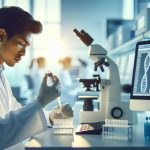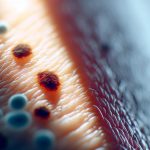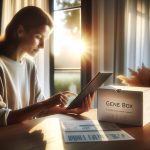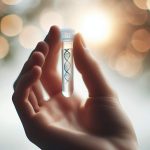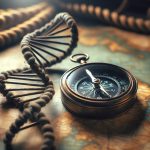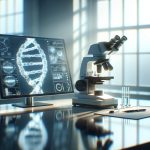Discovering a genuine bond with someone can often feel like navigating through a maze; however, imagine if there were scientific methods to reassure you that you’ve stumbled upon the right partner for life. This notion has been explored by Dr. Sara Seabrooke, one of the brains behind Instant Chemistry. This innovative company introduces DNA testing into the relationship equation, aiming to bolster connections between couples. Through their work, they’re pioneering ways for individuals to understand and nurture their relationships on a deeper level, simplifying love’s complexity with science’s precision.
What led to your start in the relationship field and the motivation behind founding Instant Chemistry?
While pursuing my undergraduate degree, I delved into a fascinating course on animal behavior that shed light on the role of genetics in shaping physical attraction. It was intriguing to discover that similar genetic influences are at play among humans, sparking curiosity about their implications in our social interactions. This knowledge wasn’t just confined to the academic realm; it hinted at practical applications that had yet to be tapped into by society at large.
The concept of leveraging DNA insights for matchmaking wasn’t entirely new within scientific circles. However, what set Instant Chemistry apart was its ambition to bridge this gap between scholarly research and everyday lives. The initiative aimed to democratize access to these findings, making it possible for people to benefit from cutting-edge science in their quest for meaningful connections.
This revelation underscored an untapped potential within the sphere of human relationships—how understanding our biological makeup could enhance compatibility and foster deeper bonds. Hence, Instant Chemistry‘s mission resonated with a broader aim: not merely facilitating introductions based on superficial criteria but enabling more profound and enduring connections through scientific insight.
Understanding the process and assessing compatibility with a future partner via DNA tests
Delving into the realm of compatibility, the test unfolds across three pivotal dimensions: biological, neurocompatibility, and psychological compatibility. Together, these facets amalgamate to furnish a comprehensive score that mirrors overall harmony between partners.
Kicking off with the biological aspect, it draws its essence from an intriguing study conducted in 1995 which has since echoed through academic corridors globally. Dubbed The Sweaty T-Shirt Study, it unveiled how women, driven solely by olfactory cues, found men whose HLA genes vastly differed from theirs more appealing. This revelation underscored that a staggering 40% of physical allure might just be wired in our DNA.
Transitioning to neurocompatibility, this segment throws light on specific genes influencing personality traits and how they mesh or clash within relationships. Testing couples for these genetic markers unravels the complex dance between differing gene variants—grading their synergy or potential discordance.
Rounding off with psychological evaluations, this phase probes deeper into personality territories—identifying potential conflict zones and highlighting strengths within a partnership. By understanding these dynamics, couples can navigate their relationship with greater insight and empathy.
In essence, weaving through these distinct yet interconnected layers offers invaluable perspectives on compatibility—each contributing its unique thread to the intricate tapestry of romantic connections.
What do you consider when determining if two people are a good match?
When exploring the complex terrain of biological compatibility, we delve into the realm of HLA genes. The diversity in these genes between two individuals directly correlates with their attraction to each other. Essentially, the greater the genetic variance, the stronger their physical pull might be.
Shifting focus to neurocompatibility, we uncover a fascinating interplay of four specific genes that shape our very essence—how we feel, connect, and react to various situations. These include a gene affecting serotonin levels linked with emotional responses, an oxytocin receptor gene influencing empathy and bonding, a dopamine receptor gene associated with seeking thrills and adventures, and finally an enzyme impacting how dopamine functions within us. Together they paint a comprehensive picture of one’s personality on a neurological level.
Lastly, when it comes to understanding someone through psychological lenses, certain questions play a pivotal role in unraveling layers of personality traits. These queries aim to shed light on whether someone tends towards dominance or submission and gauge how social or intimate they are by nature.
In essence, this triad approach—examining genetic differences for physical allure underpinned by neurocompatibility which grasps at the core of our personalities coupled with psychological assessments laying bare individual behavioral tendencies—offers profound insights into what makes us tick both individually and in relation to others.
What do you recommend when there’s no compatibility?
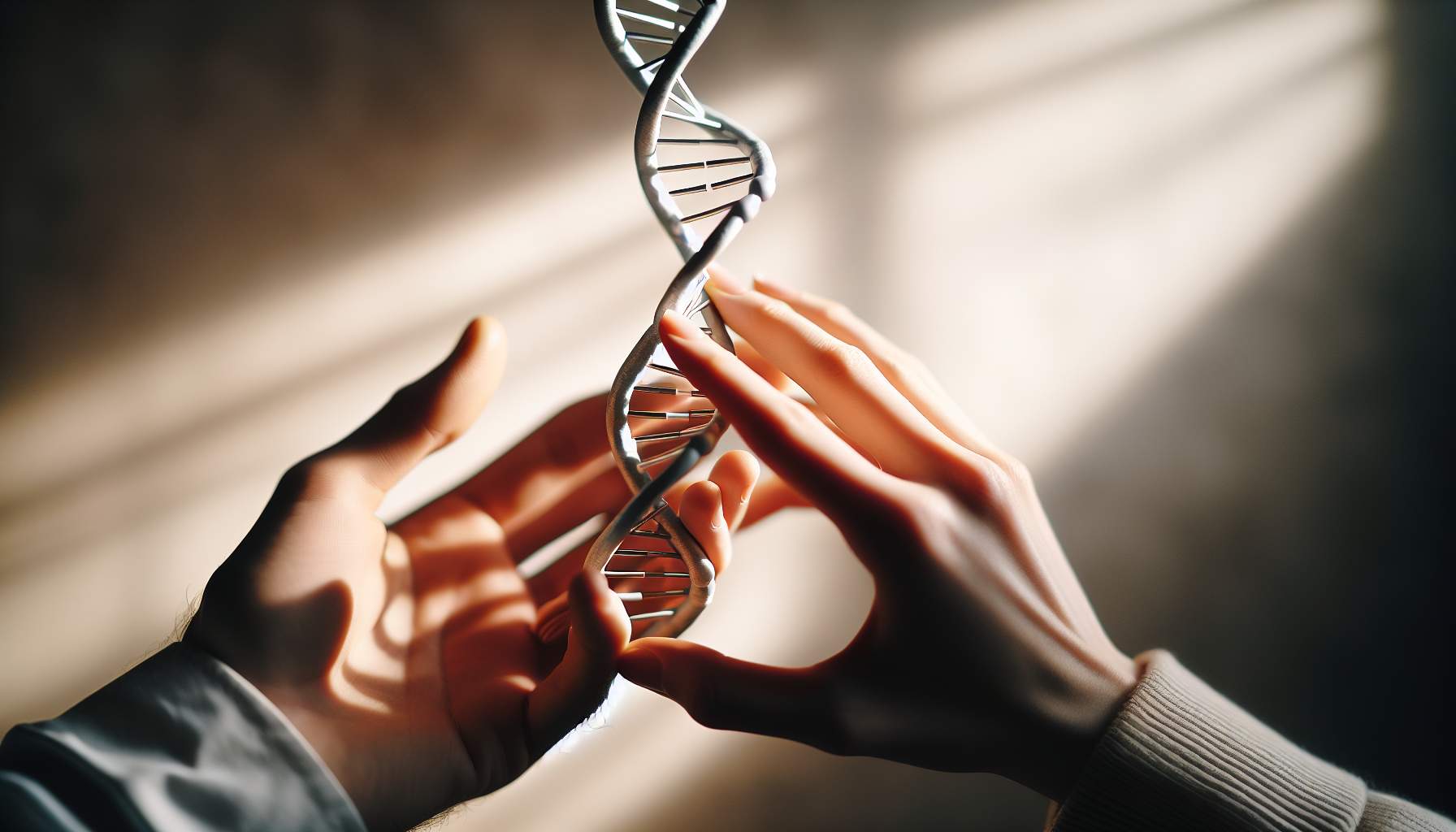
Couples seeking to bolster their bond receive a detailed 27-page guide known as the Love Manual. This document meticulously analyzes both individual and joint aspects of a relationship, identifying areas where partners excel together and highlighting those that may require attention. Rather than casting judgment or advising on the compatibility of the pair, this manual serves as a supportive tool aimed at reinforcing existing strengths while addressing any weaknesses.
The essence of this approach is not about questioning whether couples are meant to be but rather equipping them with practical advice to fortify their connection. The manual offers a treasure trove of tips and strategies designed to navigate through less sturdy patches in their journey together.
Behind the scenes is Dr. Joel Block, a seasoned clinical psychologist specializing in marital therapy. His lifelong dedication to assisting couples has culminated in both the creation of this comprehensive manual and an accompanying book titled « The Love Manual: Making and Keeping a Connection. » These resources compile invaluable insights for managing challenges within relationships, ensuring couples have access to expert guidance every step of the way.
In essence, these tools embody hope for sustaining strong partnerships by fostering understanding and resilience amidst adversities, all without dictating choices but empowering decisions grounded in love and mutual respect.
What makes Instant Chemistry unique in its field?
Our goal is to create a test that covers as much ground as possible, based on what current research supports. We delve into aspects like empathy, how one reacts under stress, and their propensity for risk-taking because these are areas well-documented in scientific studies. However, when it comes to understanding how genes influence dominance or the ability to form close relationships, the research isn’t quite there yet. To bridge this gap, we’ve integrated a psychological evaluation into our process.
This approach underscores a crucial point: our focus isn’t purely on genetics. Instead, we see DNA as a starting point for nurturing and strengthening relationships. It’s about using what we know from your genetic makeup to enhance personal connections.
What distinguishes us in the market is this unique perspective. We’re not just administering another DNA test; we’re providing couples with a toolkit for relationship success. It’s an endeavor aimed at fostering deeper intimacy and resilience within partnerships, leveraging science as a means to achieve mutual happiness and satisfaction.
What difficulties have you encountered while developing Instant Chemistry?
Venturing into the realm of online dating introduces its fair share of hurdles, but the introduction of the Instant Chemistry relationship kit might just be the game-changer we’ve been waiting for. This innovative tool offers a unique peek into what could potentially be a deeper connection with someone we match with online – beyond what any questionnaire can uncover.
The crux of this fascinating approach lies in understanding if there exists an underlying physical attraction between two people. Imagine scrolling through Tinder, passing by numerous profiles until you come across one that makes you pause. What if there’s more to that initial choice than meets the eye? The Instant Chemistry test dives into this very question and delivers insights directly to your screen, prompting you to perhaps reconsider someone you might have otherwise overlooked. Who knows? That second glance could lead you straight to your soulmate.
However, integrating such a service seamlessly into online dating platforms doesn’t come without its challenges. The effectiveness of the Instant Chemistry kit hinges on widespread participation; it needs a considerable number of users to take the test for it to truly benefit those seeking meaningful connections. This requirement stands as a significant obstacle and explains why this promising market hasn’t quite taken off yet.
In essence, while we navigate through the complexities of finding love in the digital age, tools like these offer a glimmer of hope for deeper compatibility. Could this be the missing piece in our quest for genuine connections? Only time—and perhaps a bit more participation—will tell.
How will the dating industry evolve, and will it increasingly integrate with science?
In the digital era, the quest for love has transcended traditional boundaries, finding a new home on online platforms. The matchmaking industry is constantly seeking innovative ways to refine and perfect its services. Fundamental to this pursuit is the integration of scientific methods into their algorithms. This inclusion aims at enhancing the accuracy of matches made, thereby increasing the likelihood of individuals meeting their soulmates.
The heart of the matter lies in improving user experience and satisfaction. By harnessing scientific insights, dating services are able to offer more than just random pairings; they provide connections grounded in psychological compatibility and shared interests. This approach not only elevates the chances for lasting relationships but also aligns with the industry’s goal: facilitating meaningful connections between people.
As technology evolves, so does our understanding of human relationships. The marriage between science and matchmaking represents a promising horizon for those navigating the complex world of online dating. It underscores a commitment from these platforms to go beyond mere chance encounters, aiming instead for profound connections that could potentially last a lifetime.

